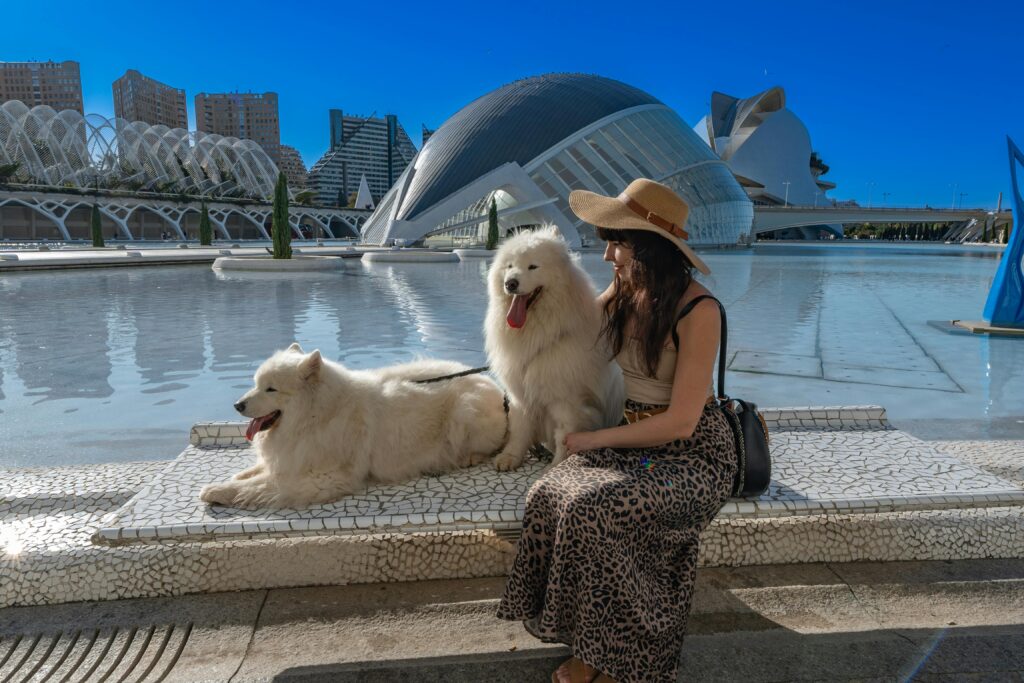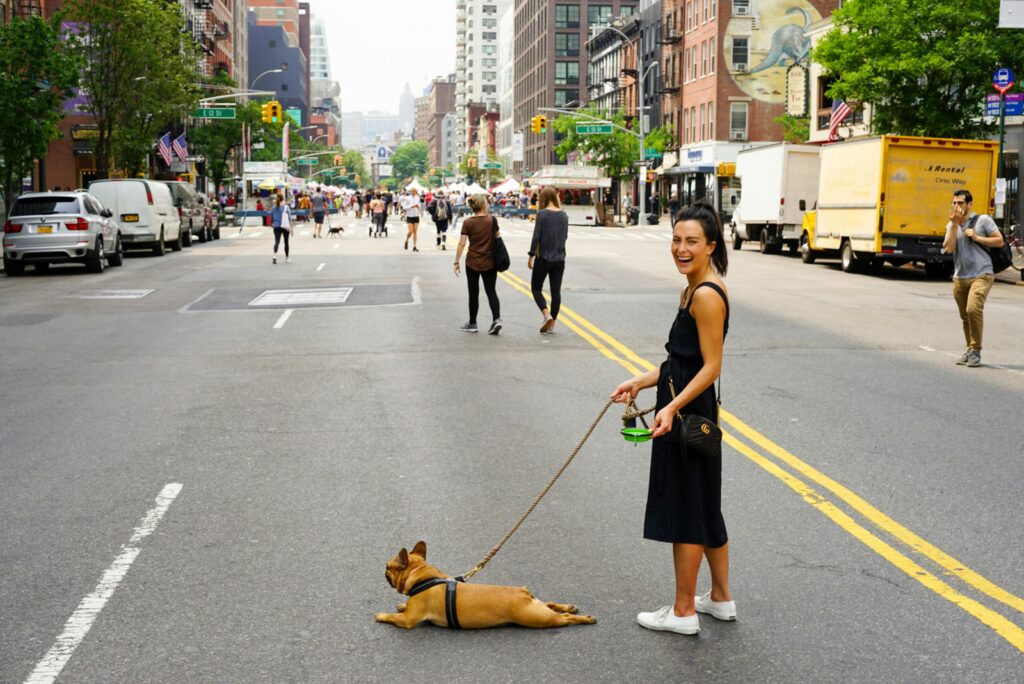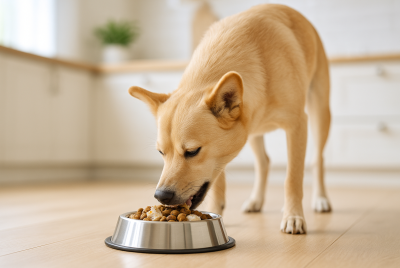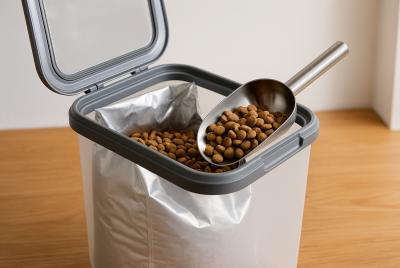Is Your Dog Stressed When Traveling? Here’s How To Make Their Trip More Comfortable
We may earn a commission for purchases made using our links. Please see our disclosure for more details.
Is your dog stressed when traveling? While taking your dog on a trip can be thrilling, not all dogs find the experience enjoyable. While some dogs get nervous when they get in a car, others like exploring new locations. You’re not alone if your pet has trouble handling the stress of travel! The good news is that you can make them feel more relaxed and at ease with a little preparation and a few tips.
Why Do Dogs Get Stressed When Traveling?
Dogs can become unbalanced if their routine is disturbed since they are creatures of habit. It might be intimidating when they are abruptly placed in a moving vehicle or a strange setting. They may feel anxious with strange sights, sounds, and odors. The first step to improving their trip experience is realizing this.
Signs Your Dog Is Stressed During Travel
Do you have any doubts about whether your dog is stressed? Keep an eye out for these warning signs. If your dog is pacing, whimpering, or panting excessively, it could be an indication of nervousness. Some dogs tremble, slobber excessively, or even refuse food when they are stressed. By identifying these behaviors early on, you can take action before their anxiety worsens.

How to Prepare Your Dog for a Stress-Free Trip
Getting your dog used to the car is a crucial first step. It makes sense that your dog might become anxious if they only travel in the car to see the veterinarian. Take children on quick, enjoyable excursions to help them form favorable associations. Give them snacks, let them sit in the car while it’s parked, and progressively extend the amount of time they spend inside. It will make a big difference to make the car seem safe.
Making a comfortable travel environment has a significant impact. No one enjoys being uncomfortable on a lengthy journey, and dogs are no exception. Create a comfortable area in the van by setting up a little bed, a favorite toy, or a soft blanket. If they are crate-trained, provide them with a safe haven by using a crate with good ventilation. They will feel more at ease the more at home they feel.
Packing their essentials ensures they have what they need. Imagine going on vacation and forgetting your essentials—it’d be frustrating, right? Your dog needs their own travel kit, too. Pack their favorite blanket, food, water, a leash, and some waste bags. Having familiar items nearby can be comforting and reduce their stress.
Exercising before traveling helps burn off energy. A tired dog is a happy traveler! Before hitting the road, take your dog for a long walk or have a fun play session. Burning off extra energy can help them stay calm and reduce restlessness. A relaxed dog is less likely to get anxious in the car.
Keeping the car cool and ventilated prevents discomfort. Dogs can’t handle heat the way humans do, and a hot car can quickly become unbearable. Keep the air conditioning on or crack a window slightly for fresh air. A well-ventilated space makes the ride much more comfortable and helps prevent overheating.
During the Trip: Keeping Your Dog Calm
Sticking to their routine helps maintain their sense of normalcy. Dogs thrive on routine, and sticking to it as much as possible helps them feel secure. Try to keep their feeding, walking, and potty breaks on a similar schedule as usual. The more predictable things feel, the less anxious they’ll be. Even small things like familiar feeding times can make a difference.
Using calming aids can make a big difference. Sometimes, a little extra help is needed to keep your pup relaxed. Dog-calming sprays, anxiety wraps, or vet-approved CBD treats can work wonders. These products create a sense of security and help ease travel jitters. Every dog is different, so experiment to see what works best for yours.
Talking to them offers reassurance. Your dog finds comfort in your voice, so don’t hesitate to reassure them. Talk to them in a calm, gentle tone and praise them when they’re behaving well. A few soothing words can go a long way in keeping them relaxed. It’s like telling them, “Hey, everything’s okay—you’re safe with me!”
Taking frequent breaks is essential for comfort. Imagine sitting in the same position for hours without a break—pretty uncomfortable, right? Dogs feel the same way! Stop every couple of hours so your dog can stretch, relieve themselves, and drink water. These little breaks can make a big difference in their comfort level.
Playing soft music has a calming effect. Believe it or not, music can have a calming effect on dogs. Soft classical music or gentle tunes can help ease their anxiety. Just like humans use music to relax, dogs can benefit from it too. Give it a try and see if it helps!
Keeping it safe is a must. Safety should always come first. Letting your dog roam freely in the car is not only unsafe but can also increase their anxiety. Use a pet seatbelt or a well-secured crate to keep them safe and comfortable. A secure dog is a calm dog.
Air Travel: What You Need to Know
Choosing a pet-friendly airline is the first step. Not all airlines are the same when it comes to pets. Some are more accommodating, while others have strict policies. Research ahead of time to find an airline that prioritizes pet comfort. A little planning can prevent a lot of stress.
Acclimating them to the crate reduces fear. If your dog will be traveling in a crate, make sure they’re used to it beforehand. Let them spend time in it at home with the door open, placing treats and toys inside. The more familiar the crate feels, the less scary it will be during the trip.
Avoiding feeding right before the flight prevents nausea. Eating right before traveling isn’t always a great idea, especially if your dog has a sensitive stomach. Feed them a light meal a few hours before the flight to help prevent nausea. This small step can save you from an upset tummy situation later.
Consulting your vet provides expert guidance. If your dog is extremely anxious about traveling, a vet may have helpful advice. Some dogs might benefit from mild medication or alternative calming solutions. Always check with your vet before giving your dog anything new.

Arriving at Your Destination: Helping Your Dog Settle In
Giving them time to adjust is important. A new place can be overwhelming, and your dog might need time to settle in. Allow them to explore at their own pace without forcing them into new situations. Being patient will help them feel safe and comfortable.
Keeping their routine consistent minimizes stress. The more things stay the same, the better your dog will adjust. Try to keep feeding times, walks, and bedtime routines as normal as possible. Familiarity is key to reducing stress.
Providing a safe space helps them feel at home. Set up a designated space with their blanket, toys, and bed. A familiar-smelling area will help them relax and feel at home. The sooner they recognize their surroundings, the sooner they’ll feel comfortable.
Scientific Insights on Canine Travel Stress
Research has shown that travel can be a significant stressor for dogs, leading to both short-term and long-term behavioral changes. A study titled “How Well Do Dogs Cope with Air Travel? An Owner-Reported Survey” found that 13.8% of dogs exhibited behavioral issues within three months of flying, with some developing separation anxiety and increased overall stress. Another study published in the “Canadian Journal of Veterinary Research” analyzed the physiological responses of dogs during air transport. The findings revealed that dogs traveling in the belly hold of a jet freighter showed higher stress levels, as indicated by increased heart rates and salivary cortisol levels, compared to those in the main cargo hold. These insights underscore the need for better travel conditions and stress-relief strategies to ensure a smoother experience for canine companions.
Products to Help Reduce Dog Travel Stress
If your dog struggles with travel anxiety, several products can make their journey more comfortable. While there are many solutions available, here are some highly rated options on Amazon that pet owners swear by.
1. Thundershirt Classic Dog Anxiety Jacket
The Thundershirt Classic Dog Anxiety Jacket is a popular choice for calming anxious dogs. It applies gentle, constant pressure, similar to swaddling a baby, helping to reduce stress during car rides, flights, and vet visits.
2. Adaptil Calm Home Diffuser for Dogs
The Adaptil Calm Home Diffuser releases dog-appeasing pheromones, mimicking the natural comforting scent a mother dog provides her puppies. This can help ease anxiety in dogs who are nervous about travel or new environments.
3. Zesty Paws Calming Bites for Dogs
The Zesty Paws Calming Bites are soft chews containing natural ingredients like L-theanine, chamomile, and melatonin to promote relaxation. These treats can be given before a trip to help keep your dog calm and stress-free.
4. PetSafe Happy Ride Dog Safety Harness
For car travel, the PetSafe Happy Ride Dog Safety Harness provides a secure way to keep your pup safe and comfortable. It attaches to a seatbelt, preventing your dog from moving around too much while still allowing some freedom.
5. Kurgo Dog Booster Seat for Cars
Smaller dogs often feel anxious when they can’t see out the window. The Kurgo Dog Booster Seat elevates them safely so they can enjoy the ride while staying securely in place.
Final Thoughts
Traveling with your dog doesn’t have to be stressful. With the right preparation and some thoughtful adjustments, you can make their journey a positive experience. Whether it’s a road trip or a flight, keeping them comfortable and secure will ensure they enjoy the adventure as much as you do. Happy travels!
Frequently Asked Questions (FAQs)
1. How do I know if my dog is travel-anxious? Watch for signs like excessive panting, whining, pacing, or trembling. These are common indicators of stress.
2. Can I give my dog medication for travel anxiety? Only if recommended by a vet. There are also natural alternatives like calming treats or anxiety wraps.
3. Should I feed my dog before a trip? It’s best to feed them a light meal a few hours before traveling to avoid motion sickness.
4. What’s the best way to keep my dog calm in the car? Use a secure space, play calming music, talk to them, and take breaks as needed.
5. Can all dogs travel by plane? Not all breeds handle flights well. Always check with your vet and airline before booking.
Safe travels with your furry friend! 🚗🐶✈




